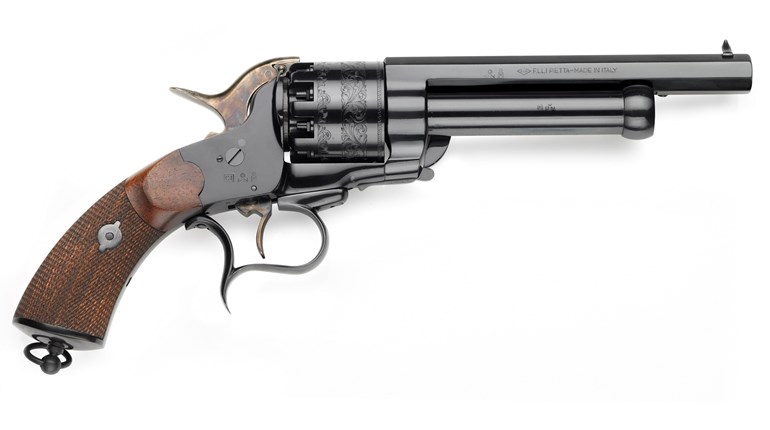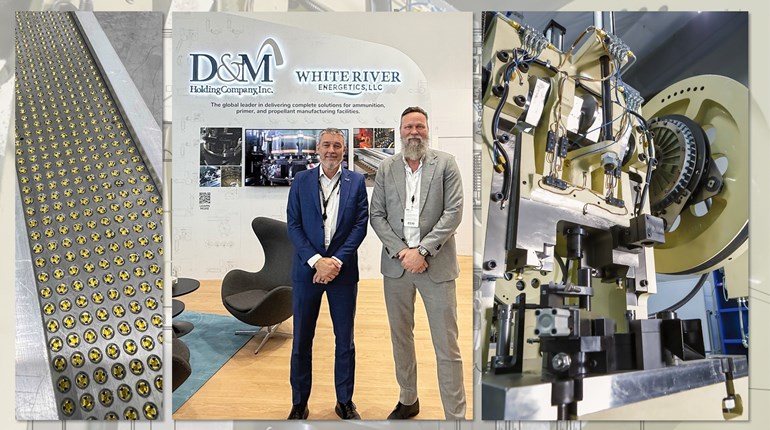
In the beginning there was black powder. It changed everything and it's still the most consistent burning gunpowder in existence. The problem is this mixture of sulfur, charcoal and potassium nitrate is very corrosive. If residue is left in a barrel, it will eat away the metal like termites chewing a board.
In 1871, Austrian Frederick Volkmann invented the first successful smokeless powder. But, it wasn't until 1884 when French chemist Paul Vielle perfected a similar powder—eventually refined by Alfred Nobel in 1887—that all of Europe ultimately abandoned black powder for military small arms. The U.S. didn't give up black powder until the early 1890s.
There are two basic types of modern smokeless powder: single and double base. Single-base smokeless powder is made from nitrocellulose. Double-base smokeless powder is a combination of nitrocellulose and nitroglycerin. The performance difference between single- and double-base powders is not set in stone, and it's hard to quantify because of other variances in powder makeup. In general, double-base powders burn hotter and dirtier. But sometimes they are the best choice if maximum velocity is desired, while some shooters believe they cause minutely faster throat erosion.

Most smokeless powders are coated with graphite so they will flow through powder measures and funnels. Smokeless powders are also coated with various chemicals to make them more water resistant, to control burning and reduce muzzle flash. Because smokeless powders can deteriorate over time—due to the generation of nitric acid—small amounts of stabilizers are added to absorb acidic byproducts.
By changing the size and shape of smokeless powder granules, burning characteristics can be controlled. These variations range from flakes as small and fine as ground pepper to cylindrical grains almost as big around as pencil lead. The three common forms of modern smokeless powder are flake, ball and extruded.
Pistol powders are generally fast-burning, double-base powders—often very similar to shotgun powders. Rifle powders are slower-burning, designed to accelerate the bullet down a long barrel in order to achieve maximum velocity with minimum pressure. However, there is some overlap. Hodgdon's Lil' Gun powder was specifically designed for .410-bore shotguns, but it also works well in many magnum-pistol and relatively small rifle cartridges like the .22 Hornet and .218 Bee.
There are a number of things to consider when choosing a powder for a specific cartridge and application. First and foremost is burn rate. Generally, large case capacities mean you should select powders with slower burn rates. For example, Hodgdon H322 is a very popular, extruded, single-base powder often used for loading .223 Rem./5.56 NATO. It's a relatively fast-burning powder that will also work for other AR-platform cartridges like the 6.8 Rem. SPC and .30 Rem. AR. Hodgdon's Retumbo powder is also a single-base extruded powder, but it has a much slower burn rate and can be used with success in the much larger-cased .338 Lapua Mag.
Additionally, as bullet weight for a specific cartridge increases, a slower-burning powder will often yield better results. A good example is the .308 Win. With light 110-grain bullets, fast-burning H4198 will work and deliver near-maximum velocities. Conversely, with bullets heavier than 130 grains, slower-burning powders like IMR 4895 and Varget will generally provide better accuracy and velocities.
Burn rate is not all that matters. Hodgdon's H322 and H335 powders have similar burn rates, and both work very well in the .223 Rem. Maximum loads for a 69-grain bullet vary by only one grain and muzzle velocities are almost identical. However, H335 is a double-base ball powder and H322 is one of Hodgdon's Extreme powders formulated to exhibit little velocity deviation over wide temperature variations.

Which powder should you choose? It depends. If you expect to be shooting when it's cold enough for thermal underwear or when it's hot enough for a Speedo, H322 is probably the best choice. But, rifles are as picky as humans and as unpredictable as a politician; your rifle or powder measure might not like H322's extruded granules.
To load consistently performing ammunition, you need to charge each cartridge case with the same amount of powder. Very often, extruded powders will bind the powder-dispensing mechanism, causing slight variations in the charge dropped. If you weigh each charge by hand or use an electronic powder dispenser, it's a non-issue. However, if you're loading on a progressive press or throwing powder charges with a dispenser, the issue requires consideration and careful checking.
When looking for guidance on powder selection, there's no substitute for a good handloading manual. One of my favorites is "Speer #14," but the new "Hornady Handbook of Cartridge Reloading, 8th Edition" has a lot of useful information, too. If you cannot find data for the make of bullet you want to use, find one of the same weight, reduce the powder charge by 10 percent and slowly work up to, but never exceed, the maximum pressure listed. There's a lot of free data on the Internet, but I caution you to take load data found on reloading-related forums and message boards with a grain of salt. Always verify data beforehand.
One of the best sources for load data is the Hodgdon website. There you can view and compare handload data for just about any cartridge you might want to load with Winchester, IMR or Hodgdon powders. Granted, with some of the newer and/or wildcat cartridges you may have to experiment, but never forget ballistic technicians from all the powder manufacturers are only a phone call away.
You'll be hard-pressed to find better customer support for any other product, anywhere.






































